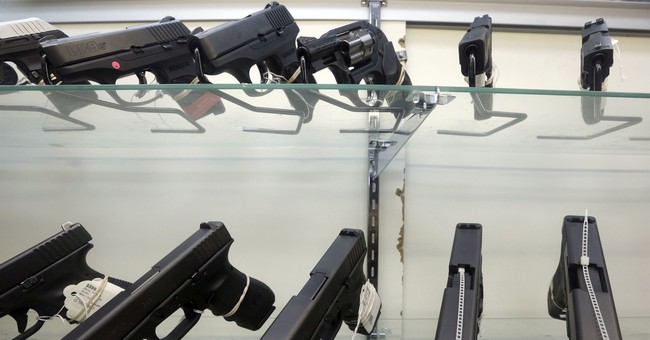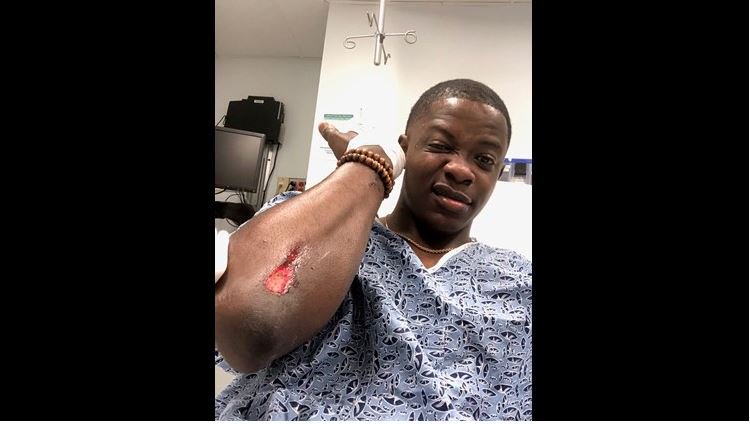Unearthed Government Data: Defensive Firearm Uses Far More Frequent Than Gun Control Advocates Claim

We're in the middle of another gun control debate due to the Waffle House shooting(more on that in a moment), so it seems like a reasonable time to delve into one of the perennial disputes within that larger policy conversation. Even though it has no bearing on the core question of constitutionality, there are widely disparate views on the frequency of Americans using firearms in self-defense, as opposed to crimes. Anti-gun forces say instances of defensive gun use are relatively low, whereas pro-gun advocates argue the opposite. As we've explored previously, some of the low-ball estimates -- like this one (100,000 per year), recently amplified by NPR -- are based on very narrow definitions of what "counts" as a self-defense incident. At the other end of the spectrum, a researcher at Florida State named Gary Kleck produced a study that found that up to well over two million such episodes occur annually in the United States. His findings have been pilloried by left-leaning critics who basically dismiss his work product as academic-tinged propaganda.
Whose numbers are more accurate? To answer that question, let's first recall that a 2013 Obama administration-commissioned review, executed in partnership with the Centers for Disease Control (CDC), pegged the relevant number at between half-a-million and three million:
Whose numbers are more accurate? To answer that question, let's first recall that a 2013 Obama administration-commissioned review, executed in partnership with the Centers for Disease Control (CDC), pegged the relevant number at between half-a-million and three million:
"Almost all national survey estimates indicate that defensive gun uses by victims are at least as common as offensive uses by criminals," says the report, which was completed in June and ignored in the mainstream press. The study, which was farmed out by the CDC to the Institute of Medicine and National Research Council, also revealed that while there were "about 300,000 violent crimes involving firearms in 2008," the estimated number of defensive uses of guns ranges "from about 500,000 to more than 3 million per year."
That's a pretty wide spectrum, but it's worth noting that Kleck's supposedly outlandish estimate falls within it, whereas lower estimates (frequently touted by the media) do not. Meanwhile, Kleck has discovered some eye-opening new data -- or rather, eye-opening old data. He's found research conducted by the CDC pertaining to this very controversy back in the 1990's, which the CDC never decided to publish. Via Reason:
Now Kleck has unearthed some lost CDC survey data on the question. The CDC essentially confirmed Kleck's results. But Kleck didn't know about that until now, because the CDC never reported what it found. Kleck's new paper—"What Do CDC's Surveys Say About the Frequency of Defensive Gun Uses?"**—finds that the agency had asked about DGUs in its Behavioral Risk Factor Surveillance System in 1996, 1997, and 1998. Those polls, Kleck writes, "are high-quality telephone surveys of enormous probability samples of U.S. adults, asking about a wide range of health-related topics. Those that addressed DGU asked more people about this topic than any other surveys conducted before or since. For example, the 1996 survey asked the DGU question of 5,484 people. The next-largest number questioned about DGU was 4,977 by Kleck and Gertz (1995), and sample sizes were much smaller in all the rest of surveys on the topic (Kleck 2001)."
After poring over the CDC data, here is Kleck's bottom-line conclusion:
The final adjusted prevalence of 1.24% therefore implies that in an average year during 1996–1998, 2.46 million U.S. adults used a gun for self-defense. This estimate, based on an enormous sample of 12,870 cases (unweighted) in a nationally representative sample, strongly confirms the 2.5 million past-12-months estimate obtained Kleck and Gertz (1995)....CDC's results, then, imply that guns were used defensively by victims about 3.6 times as often as they were used offensively by criminals.
Thanks to some responsible and skeptical analysis from National Review's Robert VerBruggen, Kleck is backing off of this initial verdict and re-evaluating his calculations because the raw CDC data on which he relied was not a fully national sample. Details: "It seems that over the course of the three years, the following 15 states were surveyed: Alaska, Colorado, Hawaii, Kentucky, Louisiana, Maryland, Mississippi, Montana, Ohio, New Hampshire, New Jersey, New York, North Dakota, Pennsylvania, and West Virginia. (Those states, from 2000 census data, contained around 27 percent of the U.S. population.) Informed of this, Kleck says he will recalculate the degree to which CDC's survey work indeed matches or corroborates his." Nevertheless, even as he re-calibrates his math, Kleck's extrapolations of the CDC numbers strongly suggest that the number of defensive gun uses in America heavily eclipses the number of gun crimes each year. If those numbers were reversed, that still wouldn't change the constitution's guarantee of the fundamental right of individuals to own firearms. But these results represent a powerful argument in favor of the importance of guns as a crucial form of self defense for US citizens in the realm of public opinion and debate. And the detail that it's CDC data that has been ignored or suppressed for year is particularly interesting, given this line of criticism from gun control supporters.
Which brings us back to the Waffle House shooting, which should have been prevented. As we've seen in other recent mass shootings, red flags were everywhere -- so much so, in this case, that the shooter's gun was reportedly confiscated by authorities, before being returned to the man's father, who then returned the weapon to his deeply disturbed son. The existing gun control system correctly identified this individual as a threat, and officials acted accordingly. Their correct judgment was subsequently reversed, then a family member restored a semi-automatic rifle into the hands of a dangerously violent mentally ill person. Four people are dead because of those failures. I'll leave you with this "point," which many gun rights opponents have mounted over the last 24 hours, regarding the breathtaking bravery of an unarmed man who risked life to confront and disarm the killer:
This man's unfathomable act of courage in no way refutes the "good guy with a gun" argument. The fact that this hero ended a massacre-in-progress with his bare hands is truly incredible. He deserves every accolade he'll receive. But are people seriously arguing that it wouldn't have been a far easier task for an armed citizen to have taken down the shooter, perhaps more quickly? I'll leave you with a few additional permutations on this rebuttal:





No comments:
Post a Comment